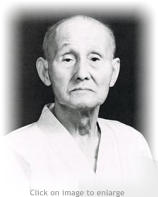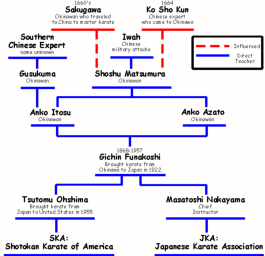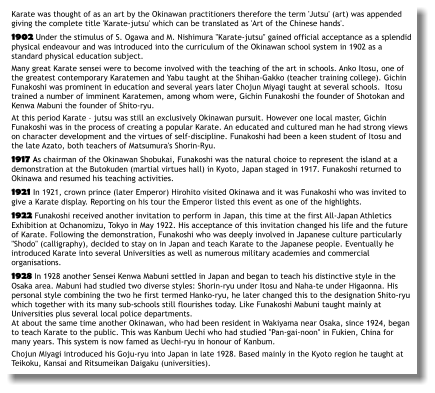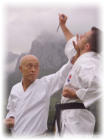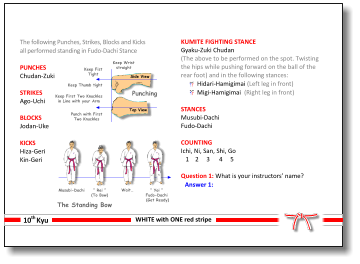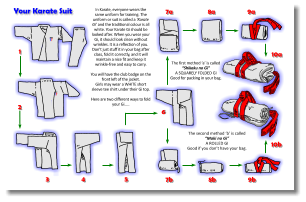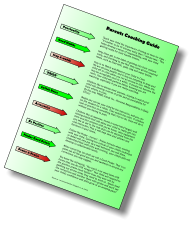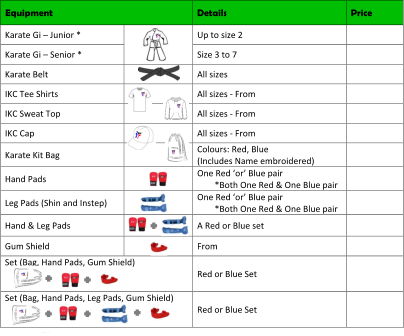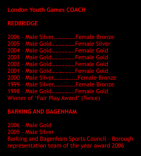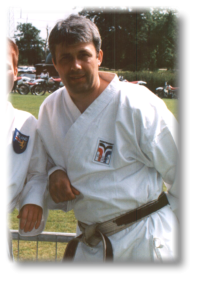



NSPCC

KARATE





INDEPENDENT
KARATE CLUBS
Click on images to enlarge


Welcome to the website of the
Independent karate Clubs (IKC)
Our Aims and
Objectives
Safeguarding Children
Chief Instructor Lesley Darrington (Constable) BA Hons 6
th
dan
Sensei Lesley
6
th
dan Wado-Ryu
Welcome to IKC
to organise and administer instruction
in karate including participation in
courses and tournaments throughout
the United Kingdom and world-wide.
to promote and enhance the image of
karate and encourage participation in
the activity; o
r
g
a
n
i
s
e
a
c
t
i
v
i
t
i
e
s
w
h
i
c
h
w
i
l
l
b
e
o
f
b
e
n
e
f
i
t
t
o
a
l
l
I
K
C
m
e
m
b
e
r
s
?
establish and encourage the
participation of all in the activities
organised by IKC regardless of age,
race, gender or disabilities and
e
n
c
o
u
r
a
g
e
a
n
d
d
e
v
e
l
o
p
K
a
r
a
t
e
i
n
t
h
e
l
o
c
a
l
c
o
m
m
u
n
i
t
y
.
to improve the standards of karate and
self defence skills of all members of
the IKC.
to offer support and listen to the
needs of all member organisations of
the IKC in all aspects of karate from
Sport to Traditional, from the youngest
beginner to the most senior instructor.
Design by Colin Constable
Copyright © 2026 Independent Karate Clubs
We take the welfare of all
children seriously and have a
comprehensive Safeguarding
Policy which has a clear
framework outlining the legal
requirements regarding working
with children and vulnerable
adults.
ALL of our Coaches and Assistant
Coaches of IKC clubs have been
checked with the DBS and have
recieved ‘Safeguarding’ training..
Self Defence Courses for Young
People - Combat Knife Crime
ENGLISH KARATE NATIONAL
GOVERNING BODY (EKNGB)






IKC

Call:
07904 975918
Email:
enquiries@ikc.org.uk


- Home
- IKC History
- Intro to karate
- Brief History of Karate
- Other Karate Styles
- Coaching
- Coaching Children
- Competition Karate
- Kumite & Kata Events
- Kumite Etiquette and Conventions
- Kumite Tactics - Brief Guide
- Join a club
- IKC & Governing Body Membership
- Contacts
- IKC Documents & Policies
- Karate Clothing & Equipment
- Chief IKC Instructor/Coach Profile
- Senior IKC Instructor/Coach Profile
- Information & Other Sites



KARATE

IKC History
Founders of IKC
Ilford Karate Clubs
Ilford Karate Clubs
becomes ‘Independent
Karate Clubs’ (1995)
O
u
r
O
r
g
ani
s
ation
Sensei Lesley Darrington (Constable) BA Hons
6
th
dan Wado-Ryu
Sensei Colin Constable BA Hons QTS
4th dan Wado-Ryu
IKC was originally known as Ilford Karate Clubs.
Sensei Colin started the first club under the Bushi-
Kai banner at the Frenford Club, Seven Kings,
Ilford, Essex in 1986.
Sensei Lesley started the second club soon after at
the Mildmay Youth Centre, Ilford, Essex in 1987 as
part of B.O.S.K.F.
After affiliating to other karate organisations over
several years, Ilford Karate Clubs eventually went on
to form their own association; ‘Independent Karate
Clubs’.
IKC is now an Association Member of the English
Karate Federation (EKF). IKC provides Club and
Group membership opportunities for ‘ALL STYLES’
where support, advice, guidance, training and senior
gradings are available to everyone.
The IKC is a friendly, approachable association with
many years of experience between its instructors
and member groups.
T
h
e
f
o
u
n
d
e
r
s
o
f
t
h
e
o
r
g
a
n
i
s
a
t
i
o
n
, L
e
s
l
e
y
D
a
r
r
i
n
g
t
o
n
(
C
o
n
s
t
a
b
l
e
)
6
th
d
a
n
a
n
d
C
o
l
i
n
C
o
n
s
t
a
b
l
e
4
th
d
a
n
, have
b
e
t
w
e
e
n
t
h
e
m
,
o
v
e
r
6
0
y
e
a
r
s
’
e
x
p
e
r
i
e
n
c
e
i
n
K
a
r
a
t
e
.
S
e
n
s
e
i
L
e
s
l
e
y
i
s
a
w
o
r
l
d
c
l
a
s
s
K
a
r
a
t
e
p
r
a
c
t
i
t
i
o
n
e
r
w
h
o
h
a
s
m
a
n
y
W
o
r
l
d
,
E
u
r
o
p
e
a
n
a
n
d
U
K
t
i
t
l
e
s
i
n
b
o
t
h
K
u
m
i
t
e
a
n
d
K
a
t
a
; and Sensei Colin qualified as a British
Karate Referee. Both are qualified School Teachers.
Copyright © 2026 Independent Karate Clubs
Design by Colin Constable
Click on image to enlarge
Click on image to enlarge


IKC

Call:
07904 975918
Email:
enquiries@ikc.org.uk


- Home
- IKC History
- Intro to karate
- Brief History of Karate
- Other Karate Styles
- Coaching
- Coaching Children
- Competition Karate
- Kumite & Kata Events
- Kumite Etiquette and Conventions
- Kumite Tactics - Brief Guide
- Join a club
- IKC & Governing Body Membership
- Contacts
- IKC Documents & Policies
- Karate Clothing & Equipment
- Chief IKC Instructor/Coach Profile
- Senior IKC Instructor/Coach Profile
- Information & Other Sites



KARATE

Introduction to Karate
What Is Karate?
Our
S
t
y
le
of Karate
C
har
ac
t
e
r
is
t
ic
s
of Wa
do
-
Ry
u
K
ar
ate
Hironori Ohtsuka
Born:
June 1, 1892
Shimodate, Ibaraki Prefecture, Japan
Died:
January 29, 1982 (aged 89)
Japan
Other names:
Hironori Ohtsuka
Residence:
Masaru_Shintani
Style:
Wadō-ryū Karate
Teacher(s):
Gichin Funakoshi, Kenwa Mabuni,
Chōki Motobu
Rank:
10th dan karate
Notable
Masaru Shintani Tatsuo Suzuki
students:
T
h
e
m
o
v
e
m
e
n
t
s
i
n
W
a
d
o
-
R
y
u
a
r
e
g
e
n
e
r
a
l
l
y
s
m
a
l
l
e
r
t
h
a
n
t
h
o
s
e
u
s
e
d
i
n
o
t
h
e
r
K
a
r
a
t
e
s
t
y
l
e
s
a
n
d
c
a
n
b
e
s
e
e
n
i
n
t
h
e
K
a
t
a
s
p
r
a
c
t
i
s
e
d
.
S
t
a
n
c
e
s
a
r
e
a
l
s
o
g
e
n
e
r
a
l
l
y
s
h
o
r
t
e
r
a
n
d
h
i
g
h
e
r
.
O
t
h
e
r
c
h
a
r
a
c
t
e
r
i
s
t
i
c
s
o
f
W
a
d
o
-
R
y
u
i
n
c
l
u
d
e
e
v
a
s
i
v
e
a
n
d
d
e
f
l
e
c
t
i
n
g
t
e
c
h
n
i
q
u
e
s
.
M
a
n
y
o
f
t
h
e
t
e
c
h
n
i
q
u
e
s
p
r
a
c
t
i
s
e
d
h
a
v
e
d
e
r
i
v
e
d
f
r
o
m
J
u
j
i
s
u
a
n
d
S
h
u
r
i
t
e
t
y
p
e
K
a
r
a
t
e
(
S
h
u
r
i
t
e
i
s
a
n
a
r
e
a
o
f
J
a
p
a
n
)
.
IKC is a multi style organisation, however, th
e
s
t
yle
o
f Kar
at
e
the founder clubs p
r
ac
t
ic
e
a
t
I
KC is:
‘
W
A
D
O
-
RY
U
’
.
W
ad
o
-
Ry
u
Kar
at
e
w
as
fo
u
n
d
e
d
b
y:
S
e
n
sei
Hi
r
o
n
o
r
i O
h
t
su
ka (1892
-
1
982)
an
d
h
as
b
e
c
o
me
t
h
e
mo
st
p
o
p
u
lar
ly t
r
ain
e
d
st
yle
in
t
h
e
w
o
r
ld
.
WADO-RYU
W
a
=
p
e
ac
e
,
h
ar
mo
n
y.
D
o
= w
ay
,
me
t
h
o
d
.
Ry
u
= st
yle,
in
d
ic
at
e
s
a
so
ft
s
t
yl
e
.
Kar
at
e
is a
M
ar
t
ial A
r
t
s
sy
st
e
m
i
n
w
h
ic
h
a
ll
t
h
e
p
o
ssib
le
mo
v
e
me
n
t
s
o
f t
h
e
h
u
man
b
o
d
y
a
r
e
u
sed
.
T
h
is
make
s Kar
at
e
a
n
id
e
al ex
e
r
c
is
e
fo
r
p
h
y
sic
al fit
n
e
ss
; it
c
o
u
ld
b
e
sa
id
t
h
at
Kar
at
e
is:
A
Ph
ys
ic
al E
xe
r
c
ise
A
Se
lf
D
e
fe
n
c
e
A
Sp
o
r
t
A
W
a
y
o
f Li
fe
It
is imp
o
r
t
an
t
t
h
at
p
r
o
gressio
n
in
K
a
r
at
e
is n
o
t
r
u
sh
e
d
b
u
t
d
e
v
e
lop
e
d
a
t
eac
h
s
t
age
.
T
ake t
im
e
t
o
le
ar
n
t
h
e
t
e
c
h
n
iq
u
e
s
an
d
mo
v
e
me
n
t
s
an
d
b
u
il
d
a
go
o
d
kn
o
w
le
d
ge
o
f Kar
at
e
-
Do.
There are many other styles
of karate, including both traditional and sport.




Design by Colin Constable
Copyright © 2026 Independent Karate Clubs
Click on image to enlarge
Click on image
to enlarge
IKC

Call:
07904 975918
Email:
enquiries@ikc.org.uk


- Home
- IKC History
- Intro to karate
- Brief History of Karate
- Other Karate Styles
- Coaching
- Coaching Children
- Competition Karate
- Kumite & Kata Events
- Kumite Etiquette and Conventions
- Kumite Tactics - Brief Guide
- Join a club
- IKC & Governing Body Membership
- Contacts
- IKC Documents & Policies
- Karate Clothing & Equipment
- Chief IKC Instructor/Coach Profile
- Senior IKC Instructor/Coach Profile
- Information & Other Sites



KARATE

Brief History of Karate
Design by Colin Constable
Copyright © 2026 Independent Karate Clubs
Click on an image to enlarge
Click on an image to enlarge
IKC

Call:
07904 975918
Email:
enquiries@ikc.org.uk


- Home
- IKC History
- Intro to karate
- Brief History of Karate
- Other Karate Styles
- Coaching
- Coaching Children
- Competition Karate
- Kumite & Kata Events
- Kumite Etiquette and Conventions
- Kumite Tactics - Brief Guide
- Join a club
- IKC & Governing Body Membership
- Contacts
- IKC Documents & Policies
- Karate Clothing & Equipment
- Chief IKC Instructor/Coach Profile
- Senior IKC Instructor/Coach Profile
- Information & Other Sites



KARATE

Traditional & Sport
K
ar
ate
Style Comparison
(Get Comparison Chart)
Other Karate Styles
“There’s not much difference between traditional and
sport karate”. Basics, in any style of karate, is the
same. Whether it is Shotokan, Wado-Ryu, Kyokushinkai
or any style.
The difference starts in the ‘performance’ of the
techniques. Not just the body, but actually the mind
behind the performance.
Traditional Karate:
is focused on self-defense, the killing blow or survival.
Every move in traditional karate has a meaning, it’s
meant for survival. The mind controls the moves, while
the action itself is purely self protection or self-
defense.
Sports Karate:
is set on scoring a point against an opponent, with a
well placed, well timed technique in order to become
a champion or to get a trophy. Sport karate also has a
set of rules which determin what is needed to win.The
traditional idea of self defense is gone. The “winning”
comes in the first place. Reality and surviving has
gone.
Each aspect of karate supports and enhances the other.
Traditional trains the mind and body to be technically
competent and strong, whilst Sports allows you to train
for speed and stamina as well as many other things.
The four earliest karate styles developed in Japan are
Shotokan, Wado-ryu, Shito-ryu, and Goju-ryu.
The first three styles find their origins in the Shorin-
Ryu style from Shuri, Okinawa, while Goju-ryu finds
its origins in Naha.
Shuri karate is rather different from Naha karate,
drawing on different predecessor influences. Shito-ryu
can be regarded as a blend of Shuri and Naha
traditions as its kata incorporate both Shuri and Naha
kata. When it comes to individual karate styles:
Shotokan involves long, deep stances and powerful
long range techniques.
Shito-Ryu, on the other hand, uses more upright
stances and stresses speed rather than power in its
long and middle range techniques.
Wado-Ryu too employs shorter, more natural stances
and the style is characterised by the emphasis on
body shifting to avoid attacks.
Kyokushin, a hard style, involves breaking more often
than the other styles and full contact, knockdown
sparring as a main part of its training.
Goju-Ryu places emphasis on Sanchin kata and its
rooted Sanchin stance, and it features grappling and
close-range techniques
Design by Colin Constable
Copyright © 2026 Independent Karate Clubs
Click on images to enlarge
IKC

Call:
07904 975918
Email:
enquiries@ikc.org.uk


- Home
- IKC History
- Intro to karate
- Brief History of Karate
- Other Karate Styles
- Coaching
- Coaching Children
- Competition Karate
- Kumite & Kata Events
- Kumite Etiquette and Conventions
- Kumite Tactics - Brief Guide
- Join a club
- IKC & Governing Body Membership
- Contacts
- IKC Documents & Policies
- Karate Clothing & Equipment
- Chief IKC Instructor/Coach Profile
- Senior IKC Instructor/Coach Profile
- Information & Other Sites



KARATE

Coaches Responsibilities
Qualifications and Standards
Coaching
IKC coaches ensure that every participant that attends
our sessions, irrespective of their level, receives the
same levels of respect, support and common courtesy.
The role of the coach is also about creating a trusting
relationship where athletes feel able to share relevant
and personal information. A coach must support
athletes to be the best by considering their physical,
social, cultural and emotional needs.
We know that coaching encourages people to start in
sport and physical activity such as karate, improves
enjoyment, maintains engagement, improves fitness,
develops skills and builds lifelong connections to sport
and activity.
This means that our coaches and instructors play a
critical role in the development of karate and other
activities and in the lives of the people they coach.
Our coaches strive to ensure participants have
positive experiences, so they are more likely to
continue and achieve their potential.
Our club instructors have the following:
A black belt grade in the style of karate being
taught
A recognised sports coach qualification
£1 million Professional Indemnity Insurance
DBS (was CRB) enhanced disclosure
Basic First Aid
Safeguarding training
Health & Safety
Coaching Children & Adults
Lesson Planning
Club Management
Instructors will have been trained in the following:










Design by Colin Constable
Copyright © 2026 Independent Karate Clubs
Click for more information
Click on image to enlarge
Click for more information

IKC

Call:
07904 975918
Email:
enquiries@ikc.org.uk


- Home
- IKC History
- Intro to karate
- Brief History of Karate
- Other Karate Styles
- Coaching
- Coaching Children
- Competition Karate
- Kumite & Kata Events
- Kumite Etiquette and Conventions
- Kumite Tactics - Brief Guide
- Join a club
- IKC & Governing Body Membership
- Contacts
- IKC Documents & Policies
- Karate Clothing & Equipment
- Chief IKC Instructor/Coach Profile
- Senior IKC Instructor/Coach Profile
- Information & Other Sites



KARATE

Click on image to enlarge
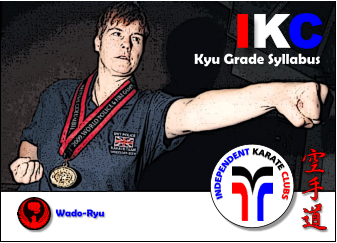

IKC

Call:
07904 975918
Email:
enquiries@ikc.org.uk
The MON and KYU grades
Before the Black Belt grades, their are several MON and
KYU GRADES. They are represented with coloured belts.
This system allows the student to develop over time
and helps to identify their grade. You will see many
variations of this system with different styles of karate
and different organisations using different numbers of
‘Mon’ and ‘Kyu’ grade levels and many different
combinations of couloured belts.
The techniques and information the student needs to
learn and understand to be able to progress, is in the
‘Syllabus’. The syllabus is available from the instructor.










Anyone can practise Karate.
People train for many different reasons,
however, the benefits will include the following:
Fostering self discipline
Boost socialisation skills
Encouraging Physical Activity
Learning to Set and Achieve Goals
Increased Self Esteem
Instilling a Sense of Respect
Improving Listening Skills
Developing Team Skills
Improvement in other areas of life
SELF DEFENCE
Karate students will be taught the ‘Basics’ of
Karate during their lessons.
And at the start of each lesson, the students will
be told ‘what’ they will be expected to learn
and understand by the end of each lesson.
To ensure learning and understanding takes
place, our lessons follow the ‘SMART IDEAS’
format as described earlier.
If you don’t already train, why not go down to
your local club and try out a few lessons?
Design by Colin Constable
Copyright © 2026 Independent Karate Clubs
The Syllabus
Training


- Home
- IKC History
- Intro to karate
- Brief History of Karate
- Other Karate Styles
- Coaching
- Coaching Children
- Competition Karate
- Kumite & Kata Events
- Kumite Etiquette and Conventions
- Kumite Tactics - Brief Guide
- Join a club
- IKC & Governing Body Membership
- Contacts
- IKC Documents & Policies
- Karate Clothing & Equipment
- Chief IKC Instructor/Coach Profile
- Senior IKC Instructor/Coach Profile
- Information & Other Sites



KARATE

Looking after your Karate Suit (Gi)
What will you learn?
Would you leave your sweat soaked tee shirt in your
training bag after training ready for next time?
Probably not.
Looking after the Gi (Karate suit) is a special part of
Karate training as it shows that you have respect for
and care yourself.
Punching, Striking, Blocking, Kicking, Throwing,
Sweeping, Stances and fighting are just some of the
things to be learnt. BUT, is learning enough?
During lessons, students are regularly monitored and
assessed to ensure that its not just LEARNING which is
taking place, but also, and more importantly,
UNDERSTANDING. This is especially important with
young children. Ultimately, GRADINGS (like a practical
exam) are taken by the student where they will
perform what they have needed to learn and
understand for the GRADE they are working towards.
As the student progresses through the grades, what
they need to be able to do and know, becomes more
technical and challenging.
As well as techniques and drills, students will learn
about some of the traditions which have been
adopted by western Karate practitioners.
There are of course many simple things to learn; you
should know the name of the style of the Karate being
practised, the name of the suit being worn during
training and other important but simple things.
Design by Colin Constable
Copyright © 2026 Independent Karate Clubs
Blocking

Kicking

Punching
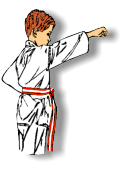
Click on image to enlarge
Click on image to enlarge
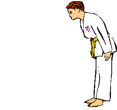
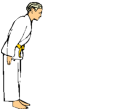
IKC

Call:
07904 975918
Email:
enquiries@ikc.org.uk


- Home
- IKC History
- Intro to karate
- Brief History of Karate
- Other Karate Styles
- Coaching
- Coaching Children
- Competition Karate
- Kumite & Kata Events
- Kumite Etiquette and Conventions
- Kumite Tactics - Brief Guide
- Join a club
- IKC & Governing Body Membership
- Contacts
- IKC Documents & Policies
- Karate Clothing & Equipment
- Chief IKC Instructor/Coach Profile
- Senior IKC Instructor/Coach Profile
- Information & Other Sites



KARATE

Flexibility
Fitness




Flexibility training or stretching will be an integral part
of every session during ‘warming up’ &‘cooling down’.
It’s a myth that you need to ’do the splits’ like Bruce
Lee or Jean-Claud Van Damme to be able to do Karate.
There are several benefits of flexibility training.
It increases range of motion. Flexibility training
helps improve the range of motion of your joints and
muscles.
Next, it decreases your risk of injury. When your
muscles are flexible, you are less likely to become
injured during physical activity. It also reduces
muscle soreness.
Flexibility training can help reduce muscle soreness
after training. Stretching after you exercise keeps
your muscles loose and relaxed.
Lastly, it improves athletic performance. When your
joints and muscles are flexible, you use less energy
while in motion, which improves your overall
performance.
Done correctly and regularly over time, your flexibility
increases providing all the benefits of better
performance and technique.






So you want to do Karate!
But how FIT do you need to be?
The simple answer is that as long as there are no
medical reasons preventing you from training and
doing exercise, your level of fitness should not be a
barrier to starting training.
Each individual who attends the class will be assessed
by the instructor who will ask questions to get an idea
of their fitness level. A short questionaire will indicate
if there are any conditions such as asthma that needs
to be monitored and if there are any concerns the
advice is always ‘ask your G.P. first before starting
any exercise.
The needs of everyone across all age groups are
diverse. Practising Karate in the club environment will
provide opportunities for individuals to start to
improve their fitness levels.
Beginners to Karate will be encouraged to push
themselves initially at their own pace. As the student
progresses through their grades, a certain level of
fitness will be expected; obviously taking into account
any disabilities or personal medical conditions.
Below are examples of the types of training students
are encouraged to strive to do to complement their
Karate training: (The following is not exhaustive)
Weight Training for the whole body
Cardiovascular exercises to improve endurance
Core Training - Core Strength
Core Training - Core Stability
Plyometrics (Jump Training)
Flexibility
Design by Colin Constable
Copyright © 2026 Independent Karate Clubs
Click on image to enlarge
IKC

Call:
07904 975918
Email:
enquiries@ikc.org.uk


- Home
- IKC History
- Intro to karate
- Brief History of Karate
- Other Karate Styles
- Coaching
- Coaching Children
- Competition Karate
- Kumite & Kata Events
- Kumite Etiquette and Conventions
- Kumite Tactics - Brief Guide
- Join a club
- IKC & Governing Body Membership
- Contacts
- IKC Documents & Policies
- Karate Clothing & Equipment
- Chief IKC Instructor/Coach Profile
- Senior IKC Instructor/Coach Profile
- Information & Other Sites



KARATE

Child Development
Diversity & Inclusion
Through participation in sport and physical education,
young people learn about the importance of key values
such as: Honesty, Teamwork, Fair play, Respect for
themselves and others, Adherence to rules
They will learn how to deal with competition and how
to cope with both winning and losing.
In terms of physical and health aspects of child and
youth development, there is an overwhelming amount
of evidence that focuses on the (mostly positive) effects
of sport and exercise on physical health, growth and
development.
We also focus on the development of the individual and
not only on the development of technical Karate skills.
While the physical benefits of participation in sport are
well known and supported by large volumes of empirical
evidence, sport and physical activity can also have
positive benefits on education.
Sport-based programmes have been shown to improve
the learning performance of children and young people,
encouraging school attendance and a desire to succeed
academically. It has also been shown that children who
train regularly gain higher grades at school.
Karate training will contribute
to the holistic development of
young people. Children take
part in fun and creative Karate
activities.
1
Contact a Family (www.cafamily.org.uk/professionals/research/statistics.html)
Statistically speaking; There are 6.9 million disabled
people of working age in the UK representing around
19% of the total working population. In addition, there
are 770,000 disabled children under the age of 16
1
IKC coach people from all backgrounds and of al
abilities. Our coaches differentiate, to individualise
their coaching, ensuring that every participant, that
attends their session, irrespective of their level,
receives the same levels of respect and support.
IKC coaches have an open mind and are not afraid to
ask the relevant people the relevant questions.
We have members with cerebral palsy, who have
developed their Karate to an extent that they
overcome some of their condition and gained so much
more confidence.
There are three keys areas which provide the greatest
impact on participation, namely disability, gender
(women and girls), and race & ethnicity. Whilst our
focus is on women disability, race and ethnicity we
recognise that as coaches we should be aware of the
impact of faith, sexual orientation, gender identity
and pregnancy and maternity of participants.
Design by Colin Constable
Copyright © 2026 Independent Karate Clubs
Click on image to enlarge
Click on image to enlarge
Click on image to enlarge

IKC

Call:
07904 975918
Email:
enquiries@ikc.org.uk


- Home
- IKC History
- Intro to karate
- Brief History of Karate
- Other Karate Styles
- Coaching
- Coaching Children
- Competition Karate
- Kumite & Kata Events
- Kumite Etiquette and Conventions
- Kumite Tactics - Brief Guide
- Join a club
- IKC & Governing Body Membership
- Contacts
- IKC Documents & Policies
- Karate Clothing & Equipment
- Chief IKC Instructor/Coach Profile
- Senior IKC Instructor/Coach Profile
- Information & Other Sites



KARATE

Getting Involved as Parents
Coaching Children
Getting Involved as Coaches
Learning & Attention Issues
Design by Colin Constable
Copyright © 2026 Independent Karate Clubs
As the parent of your child training at our club, you have
already been involved in their wish to do Karate and
taken them to the class. But that shouldn’t be the end
of your involvement.
As a parent, you are in an advantageous position of
being a positive part of your childs participation in their
chosen activity, Karate.
As coaches of young children, we are well aware of their
desires to please and do well.
The following are just some of the ways we help them to
achieve their desires:
we respect young people in karate and how they want
to train.
we get to know the children we coach. It makes the
session easier and more fun.
we adapt the sessions for the participants.
we ensure young people with disabilities are included
in everything.
we get the children to share ideas, get the children
talking and solving problems for themselves.
we make sure our instructions are clear and precise
and ‘KISs’ (”Keep it simples”) to make sure they
understand.
we ask them what they think, keep them involved and
keep checking they’re enjoying and understanding it.
we don’t just coach, we also join in ourselves, have a
laugh and have fun with the children.
we have perseverance with them.
we have fun! always enthusiastic and give the
children no option but to come back and learn more.










By following a few simple tips, you could have an
amazing impact on your childs development,
enjoyment and success and hopefully, life long
participation.
Exercise is great for every kid. But children with
learning and attention issues can have a hard time
finding a sport or physical activity that suits them.
They may not have the social or physical skills to
participate on a team. They may not have the
coordination for activities like skating or ballet. They
may find it too hard to follow rules, or they may be
bullied or left out.
Many families discover that martial arts and Karate in
particular, are an excellent option. Read on to learn
about what Karate can offer children with learning and
attention issues.
ALL our IKC
Coaches
have been
DBS checked
https://www.parentsinsport.co.uk/2019/03/10/how-can-you-help-
motivate-your-children-when-it-comes-to-their-sport/
(June 2019)
Click on image to enlarge
Click on image to enlarge
Click on image to
open in new window
IKC

Call:
07904 975918
Email:
enquiries@ikc.org.uk


- Home
- IKC History
- Intro to karate
- Brief History of Karate
- Other Karate Styles
- Coaching
- Coaching Children
- Competition Karate
- Kumite & Kata Events
- Kumite Etiquette and Conventions
- Kumite Tactics - Brief Guide
- Join a club
- IKC & Governing Body Membership
- Contacts
- IKC Documents & Policies
- Karate Clothing & Equipment
- Chief IKC Instructor/Coach Profile
- Senior IKC Instructor/Coach Profile
- Information & Other Sites



KARATE

Learning
&
Attention
Issues
cont’d
Click on image to enlarge
Childrens’ Club - Koguma the Karate Cub
Design by Colin Constable
Copyright © 2026 Independent Karate Clubs
Exercise is great for every kid. But children with
learning and attention issues can have a hard time
finding a sport or physical activity that suits them.
They may not have the social or physical skills to
participate on a team. They may not have the
coordination for activities like skating or ballet. They
may find it too hard to follow rules, or they may be
bullied or left out.
Many families discover that martial arts and Karate in
particular, are an excellent option. Read on to learn
about what Karate can offer children with learning and
attention issues.
There are lots of reasons Karate can be a good match
for kids with learning and attention issues. Here are
nine potential benefits:
What Karate can do for Children with
Learning and Attention Issues
KOGUMA is the mascot Bear Cub of the IKC
He is a hard working, tough but caring bear cub who
is here to help all the young children develop their
skills and knowledge.
He is very often seen on the certificates given out to
students after lessons for excellent effort and
presentation (appearance - neat Gi etc.)
As he develops, he will be seen more and more
giving children tips and discussing all things Karate.
Click on image to enlarge
‘KOGUMA’
THE KARATE
CUB

IKC

Call:
07904 975918
Email:
enquiries@ikc.org.uk


- Home
- IKC History
- Intro to karate
- Brief History of Karate
- Other Karate Styles
- Coaching
- Coaching Children
- Competition Karate
- Kumite & Kata Events
- Kumite Etiquette and Conventions
- Kumite Tactics - Brief Guide
- Join a club
- IKC & Governing Body Membership
- Contacts
- IKC Documents & Policies
- Karate Clothing & Equipment
- Chief IKC Instructor/Coach Profile
- Senior IKC Instructor/Coach Profile
- Information & Other Sites



KARATE

‘SMART’ - ‘IDEAS’ for Parents
who
wish
to
help
their
child
in
Karate
Design by Colin Constable
Copyright © 2026 Independent Karate Clubs
When setting goals for our Karate activities, we try to
make sure they are ‘SMART’ goals:
Specific: a specific goal has a much greater chance of
being accomplished than a general goal.
Measurable: we need to be able to measure if the
goal has been achieved.
Achievable: we want to stretch our students but the
goal still needs to be achievable within the activity.
Realistic: we need to set a goal that is realistic to the
level of the students we are coaching and how they
are progressing within their grade.
Time specific: by setting a timeframe to achieve the
goal, we give the students time to reflect at the end
of it.
We deliver our planned activities to students using
‘IDEAS’.
Introduce: when we introduce a new Karate activity,
skill or technique it is important for our students to
understand what they are learning and why they are
learning it.
Demonstrations: demonstration is a vital part of
coaching a new skill in order for our students to form a
picture of what they are going to be doing.
Explanations: providing a good demonstration with an
effective explanation helps the students to clearly
understand what they are going to do. We use simple
terms when possible and make it all relative to where
the skill fits into the Karate grade and the age and skill
level. We would then ask our students to explain the
skill back to us before trying it for themselves.
Activity: during the activity, we will draw on all our
coaching skills to ensure students understand what
they're doing and remain engaged.
Summary: at the end of each session we summarise
what has taken place, and to feed back to our students
and gain feedback from them.
‘SMART’
Specific
Measurable
Achievable
Realistic
Time specific
‘IDEAS’
Introduce
Demonstrations
Explanations
Activity
Summary
When at home, you can help your child with their
training. Use the following points as a guide; they will
have plenty to practice.


IKC

Call:
07904 975918
Email:
enquiries@ikc.org.uk


- Home
- IKC History
- Intro to karate
- Brief History of Karate
- Other Karate Styles
- Coaching
- Coaching Children
- Competition Karate
- Kumite & Kata Events
- Kumite Etiquette and Conventions
- Kumite Tactics - Brief Guide
- Join a club
- IKC & Governing Body Membership
- Contacts
- IKC Documents & Policies
- Karate Clothing & Equipment
- Chief IKC Instructor/Coach Profile
- Senior IKC Instructor/Coach Profile
- Information & Other Sites



KARATE

What Equipment do you need?
Competition Karate
WKF Kata & Kumite
Competition Rules
WKF Para-Karate
Rules
Karate Referees make it a Competition
So you’ve been training for a short while and starting to
learn and understand what karate is all about; but how
effective is what you’ve learnt so far? One way to find
out is to compete against others of the same grade and
size as you (size makes it fairer).
The idea of competition fighting, or KUMITE (freestyle
figfhting) is to outwit the opponent through good
technique along with good sporting attitude, vigorous
application of the techniques, good focus (zanshin),
good timing of techniques and the correct distance
when delivering techniques. These attributes are listed
in the WKF Kumite Rules below.
Design by Colin Constable
Copyright © 2026 Independent Karate Clubs
Both Kumite and Kata competition events can be
INDIVIDUAL and TEAM events.
A competition can be as small as two people competing
against each other in the local club and as big as the
World Championships where hundreds of competitors
from all over the world gather to compete.
Karate will be an Olympic Sport at the Tokyo Olympics
in 2020 in Japan.
For KUMITE, Compulsory Protective Equipment is
required. Because the fighters are either on the WHITE
side (Ao) or the RED side (Aka) they must have Mitts,
Shin Pads and Foot Protectors in that colour.
a Gum Shield, Body Protector, (Female) Chest
Protector, and if worn, a WKF approved Groin Guard;
and of course, a WKF approved Karate Gi.
For KATA, no special equipment required - just ensure
that the Karate Gi complies to WKF rules.
“No Referees and Officials - no competition”.
These are the people who work hard to ensure the rules
and regulations of the competition are adhered to and
that the event runs smoothly. The WKF Competition
Rules document must be fully understood by Referees
and Judges before they qualify. Coaches should also
have a good knowledge of the rules before sending
anyone to compete.
Click on image to enlarge
Click on images to open in new window
Competition Karate under the rules of the WKF,
consists of TWO main elements:
1.
KUMITE (Freestyle fighting)
2.
KATA (Form/Technique/Movement)




IKC

Call:
07904 975918
Email:
enquiries@ikc.org.uk


- Home
- IKC History
- Intro to karate
- Brief History of Karate
- Other Karate Styles
- Coaching
- Coaching Children
- Competition Karate
- Kumite & Kata Events
- Kumite Etiquette and Conventions
- Kumite Tactics - Brief Guide
- Join a club
- IKC & Governing Body Membership
- Contacts
- IKC Documents & Policies
- Karate Clothing & Equipment
- Chief IKC Instructor/Coach Profile
- Senior IKC Instructor/Coach Profile
- Information & Other Sites



KARATE

Kumite & Kata events
Free Sparring; Safe & Fun - Kumite
To supplement the WKF Competition Rules, the WKF
have produced illustrated presentations and video
guides of both the Kumite and Kata rules. They have a
lot of useful information for both competitors and
coaches.
Design by Colin Constable
Copyright © 2026 Independent Karate Clubs
Presentations
When you first begin training, you will probably be
keen to start sparring. However, you will need to be
patient as you will have to master some of the very
basic techniques first. Combinations of techniques will
also be required such as a block and counterpunch and
of course - you will have practiced pre-arranged
sparring with a partner to get your distance and timing
correct.
We have looked at the protective equipment required
already for kumite / sparring, however, there are some
elements of SAFETY to consider:
Sparring should not take place on a concrete or stone
floor.
Gum should not be chewed as there is a chocking
risk.
finger and toe nails must be short and clean.
Earrings and necklaces to be removed.
Long hair must be tied back with a simple
elasticated band and no hairs grips allowed.
Spectacles cannot be worn and any contact lenses
can only be soft ones.






Click on image to enlarge
Click on images to open in new window
Videos
IKC

Call:
07904 975918
Email:
enquiries@ikc.org.uk


- Home
- IKC History
- Intro to karate
- Brief History of Karate
- Other Karate Styles
- Coaching
- Coaching Children
- Competition Karate
- Kumite & Kata Events
- Kumite Etiquette and Conventions
- Kumite Tactics - Brief Guide
- Join a club
- IKC & Governing Body Membership
- Contacts
- IKC Documents & Policies
- Karate Clothing & Equipment
- Chief IKC Instructor/Coach Profile
- Senior IKC Instructor/Coach Profile
- Information & Other Sites



KARATE

Kumite Etiquette and Conventions
Design by Colin Constable
Copyright © 2026 Independent Karate Clubs
The idea of free sparring in the club dojo is to practice
and improve Kumite skills; in a competition, the idea is
to beat your opponent by scoring points awarded by the
referees for techniques delivered as prescribed in the
rules.
What sparring is not, is an opportunity to have a free
for all fight with the intention of hurting your
opponent.
In order to prevent a sparring match from
degenerating, simple rules should be followed as
outlined on the opposite chart. Keeping ones ‘cool’ is
probably one of the most important things you can do
in a match.








Both fighters must take proper care of their own safety
by maintaining an effective guard at all times.

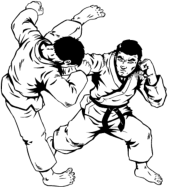


IKC

Call:
07904 975918
Email:
enquiries@ikc.org.uk


- Home
- IKC History
- Intro to karate
- Brief History of Karate
- Other Karate Styles
- Coaching
- Coaching Children
- Competition Karate
- Kumite & Kata Events
- Kumite Etiquette and Conventions
- Kumite Tactics - Brief Guide
- Join a club
- IKC & Governing Body Membership
- Contacts
- IKC Documents & Policies
- Karate Clothing & Equipment
- Chief IKC Instructor/Coach Profile
- Senior IKC Instructor/Coach Profile
- Information & Other Sites



KARATE

Kumite Tactics - Brief Guide
Design by Colin Constable
Copyright © 2026 Independent Karate Clubs
Both fighters must take proper care of their own safety
by maintaining an effective guard at all times.
DISTANCE
Fight at a distance which suits you and/or which is
unsuitable for your opponent.
Crowding taller opponents, so their longer reach is of
no advantage to them.
keep well back from those who prefer punches, so
they are forced always to step forward, or to rely on
kicks.
Don’t let the opponent corner you.
Always move as far as is necessary to make an
opponents attack miss - but no further.





TIMING
The aggressive fighter will move in as soon as you
begin a technique - but watch out for feints! (where
the opponents pretends to start an attack to draw
you out then delivers a technique).
Always look at the opponents head and shoulders,
and when they move be ready.
The defensive fighter waits until the opponents
technique has failed, then moves in even as it is
being retrieved.
Kicks take a long time to pull back and until they are,
the opponent’s defensive shield will be weak.
But never move too far away as you avoid the attack
or it will take too long to closer again.
If you naturally are an aggressive fighter, then
practice being a defensive fighter too because that
way, you will double your capabilities.






LINE
Always try and inch your way onto the closed side of
the opponent so they always have to turn before
he/she can launch an attack/technique at you.
Practise this by taking up left fighting stance against
somone in left stance, and by moving until both your
front feet are in line. Then turn your body slightly so
you face the opponent directly. They are now turned
slightly away from you.


TARGETING
Straight punches into the face close off the
opponents view.
Circular strikes are not nearly so effective, though
they can creep in around the very edge of the
opponent’s defensive shield.
Aim your front kicks high and to the side of your
opponents chest, where they are difficult to block.



COMBINATIONS
Overload the opponent’s defensive shield by a flurry
of effective techniques. .
The techniques must arrive at their targets in quick
succession, otherwise your opponent will see them
as single techniques and the advantage will be lost.
Space the attacking techniques out , so one goes for
the face and the second to the low stomach etc..
this forces the opponent to switch his attention from
high to low.
Mix circular with straight techniques to make things
even more difficult for them.




PSYCHE OUT THE OPPONENT
try stamping down hard with your lead foot, as
though you intend to go into your opponent - How do
they react?
If they pull back from you, then they are a defensive
fighter and you should hold back so they have to
switch onto being an attacker.
If they advance towards you, then they are an
attacking fighter and you should immediately put
them on the defensive by pushing forward and
closing them down.



VARY YOUR FIGHTING HABITS
We all have favourite techniques and tactics that
tend to appear at every sparring session. Make sure
the opponent doesn’t ‘suss out’ your next move by
being too predictable.
Change your fighting stance side often and be an
attacker AND a Defender.


Abridged - Traditional Karate
(June 2000)
IKC

Call:
07904 975918
Email:
enquiries@ikc.org.uk


- Home
- IKC History
- Intro to karate
- Brief History of Karate
- Other Karate Styles
- Coaching
- Coaching Children
- Competition Karate
- Kumite & Kata Events
- Kumite Etiquette and Conventions
- Kumite Tactics - Brief Guide
- Join a club
- IKC & Governing Body Membership
- Contacts
- IKC Documents & Policies
- Karate Clothing & Equipment
- Chief IKC Instructor/Coach Profile
- Senior IKC Instructor/Coach Profile
- Information & Other Sites



KARATE

Join a Club
Our after school clubs are popular.
If you would like to see a Karate club at your
school, please contact us for information.
Our childrens classes are very popular and are conducted in a safe and
friendly atmosphere with a focus on FUN and FITNESS
Children are treated as individuals and receive the attention and perform
tasks appropriate to their level of skill.
Parents and teachers regularly comment on the improvement of behaviour
and attention levels of children who train regularly at our IKC clubs.
IKC have clubs in several areas.
Contact details below for information about classes.
Design by Colin Constable
Copyright © 2026 Independent Karate Clubs




IKC

Call:
07904 975918
Email:
enquiries@ikc.org.uk


- Home
- IKC History
- Intro to karate
- Brief History of Karate
- Other Karate Styles
- Coaching
- Coaching Children
- Competition Karate
- Kumite & Kata Events
- Kumite Etiquette and Conventions
- Kumite Tactics - Brief Guide
- Join a club
- IKC & Governing Body Membership
- Contacts
- IKC Documents & Policies
- Karate Clothing & Equipment
- Chief IKC Instructor/Coach Profile
- Senior IKC Instructor/Coach Profile
- Information & Other Sites



KARATE

Member Associations, Clubs & Individuals of IKC
IKC & Governing Body Membership

Across England, there are many different national governing bodies of sport.
The national governing body for Karate in England is the ‘ENGLISH KARATE
NATIONAL GOVERNING BODY’, the EKNGB of who we are members. As a
member group, we can register individuals and other Karate groups who
wish to join IKC.
The EKNGB are there to ensure that standards of Karate practice, coaching,
competition and funding meet certain standards and coordinate with
European and World Karate organisations.
Being a member of the EKNGB provides a limited but essential insurance
cover for participants in Karate in the event of injury to self and others
through the practice of Karate in either the club or in competition. This is
one of the reasons why the club instructor insists that members obtain a
karate licence soon after joining; without the licence (registration),
participants will not be allowed to participate in competitions or take
gradings.
We have two types of membership:
INDIVIDUAL - people who train at any of our IKC clubs will become members
of IKC who will in turn, register them with the Karate Governing Body
(EKNGB) and provide an insurance cover and a record of their grade.
GROUP - associations can become a member group of IKC. IKC will then
register their members with the EKNGB and provide access to National
events and training.
Design by Colin Constable
Copyright © 2026 Independent Karate Clubs


Click on image for link














Click on image to enlarge


IKC Clubs & Individuals
Karate Federations &
Governing Bodies for
British Nations



ENGLISH KARATE NATIONAL GOVERNING BODY
IKC

Call:
07904 975918
Email:
enquiries@ikc.org.uk


- Home
- IKC History
- Intro to karate
- Brief History of Karate
- Other Karate Styles
- Coaching
- Coaching Children
- Competition Karate
- Kumite & Kata Events
- Kumite Etiquette and Conventions
- Kumite Tactics - Brief Guide
- Join a club
- IKC & Governing Body Membership
- Contacts
- IKC Documents & Policies
- Karate Clothing & Equipment
- Chief IKC Instructor/Coach Profile
- Senior IKC Instructor/Coach Profile
- Information & Other Sites



KARATE

Contacts
Or call: 07904 975 918
Contact details - Select to email:
Information about joining a class
Class times
Directions to club venues
Gradings
etc.
Need a IKC licence
Questions about the application
Where’s my licence?
etc.
Groups wishing to join IKC
Schools wishing to contact IKC
Need to buy equipment
Want information not found on web site
etc.
Need to speak to an instructor
Would
like
to
know
how
your
child
is
progressing;
or
simply ask a question
Our Designated Safeguarding Officer is Colin Constable.
If you have any safeguarding concerns, please email on this
link or Tel: 07590 687477
Design by Colin Constable
Copyright © 2026 Independent Karate Clubs







IKC

Call:
07904 975918
Email:
enquiries@ikc.org.uk


- Home
- IKC History
- Intro to karate
- Brief History of Karate
- Other Karate Styles
- Coaching
- Coaching Children
- Competition Karate
- Kumite & Kata Events
- Kumite Etiquette and Conventions
- Kumite Tactics - Brief Guide
- Join a club
- IKC & Governing Body Membership
- Contacts
- IKC Documents & Policies
- Karate Clothing & Equipment
- Chief IKC Instructor/Coach Profile
- Senior IKC Instructor/Coach Profile
- Information & Other Sites



KARATE

IKC Documents & Policies
Constitution &
Policies of IKC
Policies
Other Policy
Documents
As a responsible sports organisation, we like to ensure
that the following information is available to all:
Design by Colin Constable
Copyright © 2026 Independent Karate Clubs
Click on image below for link
1.
IKC General Safeguarding Policy
6
2.
IKC Safeguarding Children and Young People Policy
9
3.
IKC Safeguarding Adults’ Policy
12
4.
Safe Practice Policy (Children& Adults)
16
5.
Health & Safety Policy
19
6.
Emergencies & First Aid Policy
22
7.
Concussion Guidelines Policy
23
8.
Equality & Diversity in Sport Policy
25
9.
Photography & Social Media Policy
27
10.
Code of Conduct for Members, Coaches & Parents
29
11.
IKC Whistle Blowing Policy
31
12.
Teaching and the Law Policy
32
13.
Complaints Procedure Policy
33
S
afeguarding Children/Young People
Reporting Concerns Procedures Flow-Charts
34
IKC Safeguarding Children Incident Report Form
37
Safeguarding Adults Reporting Concerns Procedures Flow Charts
41
IKC Safeguarding Adults’ Incident Report Form
44
IKC Safeguarding Policy: Distribution & Contact List
47
Self-Declaration and Disclosure Form
49
IKC Bank Details
51
Indemnity & Public Liability Insurance
52
Section
Page
Page
Click on image above for link


IKC

Call:
07904 975918
Email:
enquiries@ikc.org.uk


- Home
- IKC History
- Intro to karate
- Brief History of Karate
- Other Karate Styles
- Coaching
- Coaching Children
- Competition Karate
- Kumite & Kata Events
- Kumite Etiquette and Conventions
- Kumite Tactics - Brief Guide
- Join a club
- IKC & Governing Body Membership
- Contacts
- IKC Documents & Policies
- Karate Clothing & Equipment
- Chief IKC Instructor/Coach Profile
- Senior IKC Instructor/Coach Profile
- Information & Other Sites



KARATE

Karate Clothing & Equipment
Karate Gi (Suit)
Karate Belts
IKC Equipment List
Personalised Clothing and Equipment
Ordering Clothing & Equipment
Adults Gis
Childrens
Gis
A Karate Gi is required for training and can be obtained
from the club instructor.
All our Karate Suits come ready with the IKC Badge
embroidered onto the left chest of the jacket. (no
stitching required)
Because childrens’ bodies are
proportionatly different to an adult,
Gis for children are cut differently.
When getting a new Gi for children,
it’s wise to get one that is a little
bigger than fitting perfectly. This
will allow for some growth of the
child.
Belts are available at every grading.
If successful, you can get your new
coloured belt from the in structor.
Design by Colin Constable
Copyright © 2026 Independent Karate Clubs
Click on image to enlarge
IKC and the IKC Logo, are embroidered on all
Sweatshirts, Jogging /Tracksuit Bottoms, Kit Bags, Caps
and Tee Shirts along with your NAME. This is included in
the cost of the item.
All items in the above list can be purchased from your
Club Instructor. Ask for an ORDER FORM, complete the
order then hand it to your Club Instructor. You can pay
in advance or when you recieve your items.
Other Karte equipment, not on the above list, can also
be obtained for you on request.
Click on image to enlarge
Click on image to enlarge
Click on image to enlarge
IKC

Call:
07904 975918
Email:
enquiries@ikc.org.uk


- Home
- IKC History
- Intro to karate
- Brief History of Karate
- Other Karate Styles
- Coaching
- Coaching Children
- Competition Karate
- Kumite & Kata Events
- Kumite Etiquette and Conventions
- Kumite Tactics - Brief Guide
- Join a club
- IKC & Governing Body Membership
- Contacts
- IKC Documents & Policies
- Karate Clothing & Equipment
- Chief IKC Instructor/Coach Profile
- Senior IKC Instructor/Coach Profile
- Information & Other Sites



KARATE

Chief IKC Instructor/Coach Profile
Lesley Darrington (Constable) BA (Hons)
6th Dan Wado-Ryu
Karate Achievements
Main Karate Titles
Major Titles and Medals including
THREE World titles;
18 British
and
6 English Titles
.
Sensei Lesley has been practising Karate since she was
12 years old.
She has a:
BA (Hons) in Cultural Studies and a teaching
qualification.
City & Guilds Certificate in Recreation & Leisure (level 3
with distinction)
Commendation for Bravery Award as a Met Police
Officer and an Honours Award for achieving Top Marks in
Policing exams.
She is a Metropolitan Police Trainer and achieved an
Honours Awards for gaining top marks in
A Qualified Youth Worker
Design by Colin Constable
Copyright © 2026 Independent Karate Clubs
Click on images to enlarge
London Borough Barking and Dagenham
‘Coach of the Year 2002’
London Borough Redbridge
‘Sports Person of the Year’ (1994 & 1999)
British Universities Karate Championships 1999
Competitor of tournament award
Combat Magazine ‘Competitor of the Event Award’
(English Karate Championships 1993)
Professional Sports Coach
6
th
Dan Wado–Ryu and 1
st
Dan
Shotkan






Click on images to enlarge
IKC

Call:
07904 975918
Email:
enquiries@ikc.org.uk


- Home
- IKC History
- Intro to karate
- Brief History of Karate
- Other Karate Styles
- Coaching
- Coaching Children
- Competition Karate
- Kumite & Kata Events
- Kumite Etiquette and Conventions
- Kumite Tactics - Brief Guide
- Join a club
- IKC & Governing Body Membership
- Contacts
- IKC Documents & Policies
- Karate Clothing & Equipment
- Chief IKC Instructor/Coach Profile
- Senior IKC Instructor/Coach Profile
- Information & Other Sites



KARATE

Senior IKC Instructor/Coach Profile
Colin Constable BA (Hons)
4th Dan Wado-Ryu
Karate Achievements
Main Karate Titles
Many
Club
and
Association
competition
successes
including
the
following:
Sensei Colin has been practising Karate for over forty
years
He has a:
BA (Hons) QTS (First) D & Technology
Advanced Certificate in Education Research
(Cambridge)
Advanced GNVQ Leisure and Tourism (with Distinction)
YMCA Qualified Fitness Trainer
Qualified Youth Worker
Design by Colin Constable
Copyright © 2026 Independent Karate Clubs
Click on images to enlarge
1986
BMAF Open Championships
Kumite - Gold Medal
1987
BMAF Open Championships
Kumite - Gold Medal
1988
BOSKF Open Championships
Kumite - Silver Medal
1988
Bavarian Shotkan Cup
Kumite - Silver Medal
1990
Rangahir Invitation
Kumite - Silver Medal, Team Kumite - Silver Medal
1991
Uxbridge Invitation Championships
Kumite - Silver Medal, Team Kumite - Gold Medal
London Borough Barking and Dagenham
‘Coach of the Year 2000’
England and British Referee
Professional Sports Coach



Click on images to enlarge
IKC

Call:
07904 975918
Email:
enquiries@ikc.org.uk


- Home
- IKC History
- Intro to karate
- Brief History of Karate
- Other Karate Styles
- Coaching
- Coaching Children
- Competition Karate
- Kumite & Kata Events
- Kumite Etiquette and Conventions
- Kumite Tactics - Brief Guide
- Join a club
- IKC & Governing Body Membership
- Contacts
- IKC Documents & Policies
- Karate Clothing & Equipment
- Chief IKC Instructor/Coach Profile
- Senior IKC Instructor/Coach Profile
- Information & Other Sites



KARATE

Information & Useful Sites
Design by Colin Constable
Copyright © 2026 Independent Karate Clubs
General
Information
Member Groups
Governance
Karate / Martial Arts
& Other Groups
IKC

Call:
07904 975918
Email:
enquiries@ikc.org.uk


- Home
- IKC History
- Intro to karate
- Brief History of Karate
- Other Karate Styles
- Coaching
- Coaching Children
- Competition Karate
- Kumite & Kata Events
- Kumite Etiquette and Conventions
- Kumite Tactics - Brief Guide
- Join a club
- IKC & Governing Body Membership
- Contacts
- IKC Documents & Policies
- Karate Clothing & Equipment
- Chief IKC Instructor/Coach Profile
- Senior IKC Instructor/Coach Profile
- Information & Other Sites







